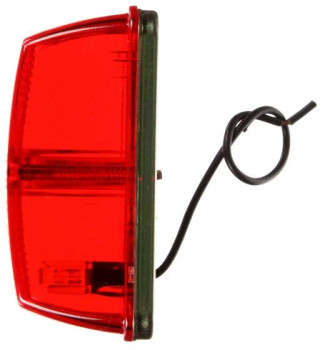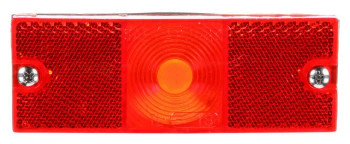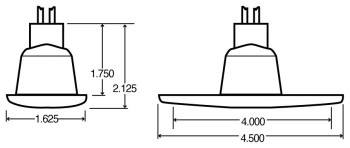Truck-Lite
18050Y, Truck-Lite Model 18 Yellow Marker/Clearance Light with Blunt Cut Wires
- SKU:
- 18050Y
- Shipping:
- Calculated at Checkout
Description
- 18050Y
- Truck-Lite Model 18 Yellow Marker/Clearance Light with Blunt Cut Wires
- Uses standard mounting holes & accessories
- Draws less current, allowing more power for other vehicle requirements
- OmniVolt versions also meet ECE standards
- Not suitable for PC requirements
- OmniVolt versions address increasing vehicle power demands by operating equally in electrical systems ranging from 10 to 30 volts
- Meets SAE J592e standards
- Meets SAE J594f when mounted with no roll out or rollback
- Voltage: 12
- LED Lighting
- Number of Diodes/Bulbs: 3
- Number of Wires: 2
- Lamp Connection: Hardwired
- Plug Side One: Hardwired
- Plug Side Two: Blunt cut
- Lens Shape: Rectangular
- Lens Color: Yellow
- Mount/Trim Color: Yellow
- Lens & Housing Material: Acrylic
- Compliance Family: FMVSS 108 / CMVSS 108 / DOT / SAE
- Mount Type: 2 Screw
- Mounting Connector Diameter: 1.375 inches
- Lens Width & Height: 451 x 1063 inches
- Wire Gauge: 18
- Made in the USA
- Lifetime Warranty
LED Model 18 Marker/Clearance Light (Red): 18050R
Truck-Lite LED Marker/Clearance Lamps
Cross#'s: TRU-18050Y, 2060461, 18050Y4, 25172900
VMRS: 034-004-253
What lights do I need?
Check the specific vehicle requirements or contact Truck-Lite Technical Support. Note that states cannot require anything different than what is in FMVSS-108; however, states can add regulations.
How hard should I tighten down (torque) plastic lights or devices?
Over-torqueing will generally cause cracking or distortion. Use the torque specifications provided by the manufacturer. A marker light will generally be in the neighborhood of 8 to 20 inch lbs., but a good rule of thumb is to use the minimum torque necessary to secure the device.
I'm painting my vehicle, what if I get some paint on the lens?
You should be careful to avoid getting paint on the lights; most paints (excluding water based) are incompatible with polycarbonate lights. They may also cause wires or cable insulation to crack.
What's the difference between an acrylic and polycarbonate lens?
Given its weather resistance and clarity, acrylic has long been the most widely used material for lenses. However, polycarbonate is much less likely to shatter, chip or crack upon impact and can withstand higher exposure to heat. Polycarbonate lenses are given a special coating to improve abrasion, UV and chemical resistance; still, to prolong the life of your lenses, it is recommended that you only clean them with a mild detergent and soft cotton cloth.
What is the lifespan of LED lighting?
As you may know, LED lights are monochromatic. Monochromatic means that red LEDs only produce red light, amber LEDs only produce amber light... but now there are white LEDs. White light is often produced by using a blue LED covered by a ceramic phosphor coating. When the blue wave length light is produced, the phosphor releases photons that fill the spectrum and produces white light. Sometimes we use white LEDs with colored lenses to get red or amber lights but this is not common.
To answer the question, you needed to know the above information. The color of the light often indicates the lifespan of the LED Lighting. Red LEDs are known to be the longest lasting products, followed by white LEDs, with amber LED technology deteriorating more quickly. The good news is that LED lighting frequently exceed 50,000 hours of life.
Can I still drive a vehicle with LED lights if some of the LED's go out?
This is open to interpretation. It is generally assumed that, if several diodes fail on a light, but most of the light remains lit, you are okay to drive the vehicle. Truck-Lite strongly recommends replacing lights with failed diodes as soon as possible.












